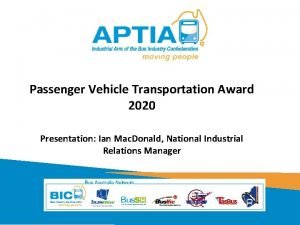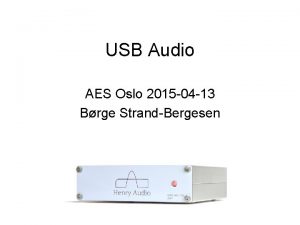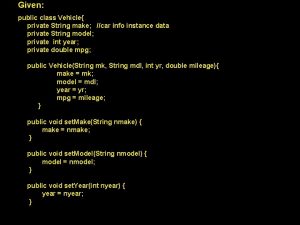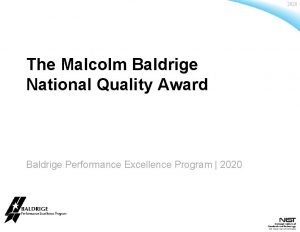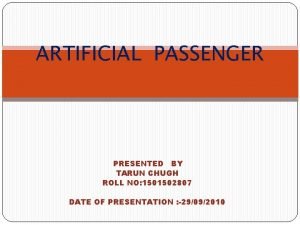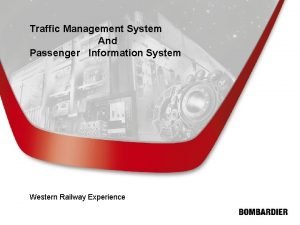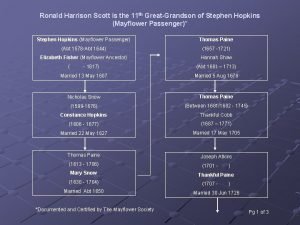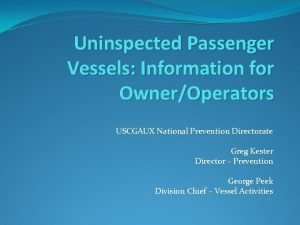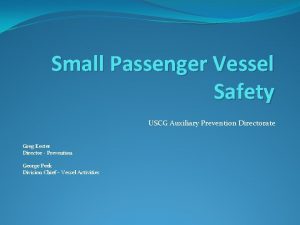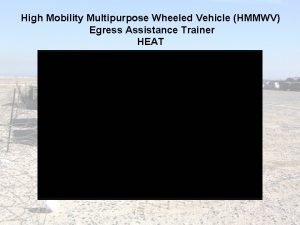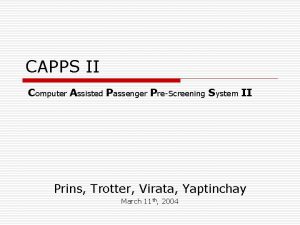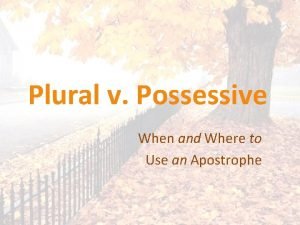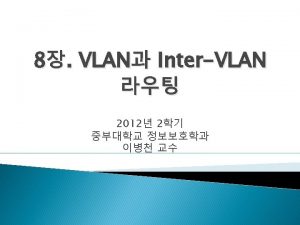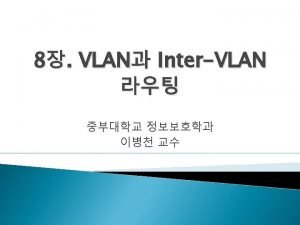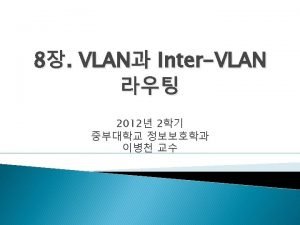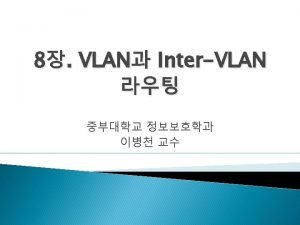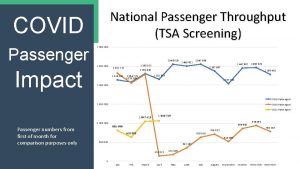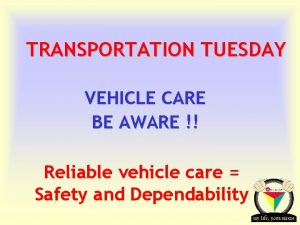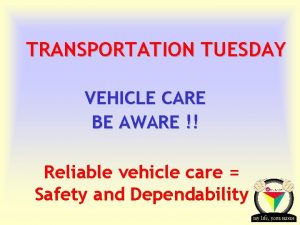Passenger Vehicle Transportation Award 2020 Presentation Ian Mac























- Slides: 23

Passenger Vehicle Transportation Award 2020 Presentation: Ian Mac. Donald, National Industrial Relations Manager

THE PASSENGER VEHICLE TRANSPORTATION AWARD 2020 • The PVTA 2020 came into operation on 13 April 2020, following an extensive review of all modern Awards, which had commenced on 1 January 2014. • It was such an exhaustive process to the extent that, in 2018, the Fair Work Act was amended to remove the necessity for the four year review under section 156 i. e. it crashed on its first review. • The only way to review a modern Award now is to apply on the grounds that a provision is ambiguous or uncertain or because an Award provision does not meet an objective of a modern award under the Act (ss. 157 – 161)

FORMAT • This is a different looking Award from the previous PVTA 2010 in that this PVTA 2020 has schedules, which provide details of Award payments for permanent as well as casual employees. • The summary of hourly rates (Schedule B) is a comprehensive outline of full time, part time and casual rates with examples of overtime payments, weekend penalties and early and late running loadings. • Schedule C contains a summary of the allowances including wage related allowances (first aid, articulated bus) and expense related allowances (meal, vehicle x 2). • Schedules E to G include draft agreements for time off in lieu, to take annual leave and to cash out leave.

DEFINITIONS (Clause 2) • “Broken shift” means a spread of hours permitted under State and National driving regulations and with a break of more than 60 minutes between two portions of work. • “The standard rate” used to facilitate some allowances is set as a Grade 3 employee. • “Employee” and “employer” means a national system employer, employee. • “Waiting time” is defined as time, excluding a meal break in which a driver has no demand for work, is not on call and has no demand placed upon them for work.

DEFINITIONS EXAMPLES: Broken Shift (Total spread = 9 hours; Paid = 6 hours) First part: 7. 00 am to 12. 00 am with a hour unpaid meal break (9 am to 10 am) Second part: 2. 00 pm to 4. 00 pm Waiting Time (Total spread = 8 hours; paid for 6 hours) Leaves depot at 8. 00 am, arrives at destination 10. 00 am (2 hours), Waiting time 10. 00 am to 2. 00 pm (4 hours) Returns to depot 2. 00 pm to 4. 00 pm (2 hours)

NATIONAL EMPLOYMENT STANDARDS (Clause 3) • The National Employment Standards are incorporated into the Award. If a clause in an Award or contract of employment is less than an NES then section 56 of the Fair Work Act states that the NES provision applies. • A copy of the National Employment Standards must be available to employees at each work area, along with a copy of the Award, applicable to them. • The process to follow for family friendly arrangement requests and 5 days unpaid family and domestic violence leave have been added to the NES from the review.

TYPES OF EMPLOYMENT (Clauses 8 -11) • The PVTA 2020 has three types of employment, full-time, part-time and casual. Some Awards have other types including fixed term, regular casual, seasonal, weekly, flexible part time. • Full-time employment guarantees 38 hour work each week with a minimum payment of 4 hours for each shift or day engaged. • Part-time employees agree to a reasonably predictable set of hours, with a minimum payment of 3 hours for each day they are engaged. • An employee can agree to vary these hours but any hours, worked outside of the agreed hours or 38 hours, attract overtime loadings.

TYPES OF EMPLOYMENT • A casual employee receives an additional 25% loading for ordinary hours only, in lieu of paid leave, notice on termination and redundancy afforded to part time and full time employees by the NES. • Casuals are engaged as such and are paid by the hour. School bus casuals receive a minimum payment of 2 hours each engagement, otherwise 3 hours each shift, including broken shift. • A regular casual employee, working regular and consistent hours for at least 12 months, is entitled to request conversion to more permanent employment, which can only be refused on ‘reasonable business grounds’ i. e. hours of work reduced, hours of work change or significant adjustment to hours of work.

TYPES OF EMPLOYMENT Workpac Pty Ltd v. Rossato has changed our thinking about casual employment. The Federal Court decision upheld that: • A ‘firm advance commitment’ of work probably means that an employee cannot be deemed to be a casual but a part time or permanent employee. • NES entitlements such as annual leave, personal leave and compassionate leave may apply and become payable retrospectively. • It might not be possible to set off payments already made to an employee to avoid double dipping. The decision has been challenged in the High Court.

TYPES OF EMPLOYMENT Apart from an appeal to the High Court there are other issues: • Roundtable discussions between Unions and Employer Groups, which may lead to legislation including a definition of ‘casual’, a higher obligation for ‘casual conversion’ clause and perhaps a ‘set off’ and/or estoppel’ mechanism to protect employers. In the meantime employers should: • Consider permanent employment for long term rostered casuals • Ensure that employment letters state the nature of the employment • Payslips reflect the breakdown of the base rate and the loading

CLASSIFICATIONS (Clause 12) The PVTA 2020 has employee classifications, detailed in Schedule A. The Grades of drivers are relevant for determining the rate of pay. • Grade One – cleaners, trainees (no passengers), attendants, yard persons. • Grade Two – school bus (< 25 pax) and persons who undertake ancillary duties (ticketing, pre-departure checks). • Grade Three – school bus (>25 pax) route bus (<25 pax), coach and charter (<650 Klms) not used as a route bus. An employee such as a supervisor, scheduler or depot manager may not fit into any Grade but into the Miscellaneous Award 2020.

CLASSIFICATIONS The PVTA 2020 has employee classifications, detailed in Schedule A. The Grades of drivers are relevant for determining the rate of pay. • Grade Four – Route bus (>25 pax), coach driver (>25 pax) travelling 650 Klms or more or absent overnight. • Grade Five – driver who understands operations, instructor, trainer, inductions and customer service activities. • Grade Six – driver with higher skills, who instructs, trains, provides customer service skills, support for operations, assesses new drivers. An employee such as a supervisor, scheduler or depot manager may not fit into any Grade but into the Miscellaneous Award 2020.

HOURS OF WORK (Clause 13) • Ordinary hours are rostered hours of no more than 38 hours a week or averaged over a 7, 14, 21 or 28 day cycle, or no more than 10 hours a day, stand alone. • Casual ordinary hours are hours up to 38 whilst ordinary hours for a part-time employee are those agreed hours up to 38 hours. • A coach or bus driver on a single day charter can have their hours divided into 2 working periods where they don’t return to the depot and are paid waiting time, equal to half of the wage rate. • Breaks of at least 30 minutes must be taken in every 8 hours period or with a paid crib break of at least 15 minutes every 5 1/2 hours.

HOURS OF WORK EXAMPLE: Calculating Ordinary Hours Monday-Tuesday- Wednesday- Thursday- Friday - Saturday 12 hrs - 6 hrs - 8 hrs - 6 hrs Option 1 – 46 hours (38 x 1; 3 x 1 ½; 5 x 2) Option 2 – 46 hours (38 x 1; 5 x 1 ½; 3 x 2)

WAGES AND ALLOWANCES (Clauses 15 -17) • Wages are calculated in 6 Grades (1 to 6) as a minimum weekly wage and as an hourly rate. The calculation is to the second decimal point. • This year’s MWD is 1. 75%. Over the last three years they have been 3. 3%, 3. 5% and last year 3%. • The increase is deferred to 1 November 2020. • The articulated vehicle, first aid, meal and travel allowances come into effect from 1 November 2020. • Wages are paid weekly or fortnightly and no later than 2 days from the expiration of the pay period and within 2 working days of termination.

WAGES AND ALLOWANCES • Allowances are divided into wage related allowances and expense related allowances and include a first aid, articulated bus, travel and meal allowance. • Other allowances include a medical allowance which enable an employer to require a medical from an employee at the employer costs but related to the inherent requirements of the job. • Other allowances include an overnight allowance where an employee does not return to the depot for at least a full day and night. An 8 hour allowance is payable. • Other allowances include fares, travelling time and uniform.

LOADINGS AND PENALTIES (Clauses 19 -20) • Overtime attracts a loading of 150% for the first three hours and 200% thereafter and cannot be unreasonably refused. • Overtime is payable for work done outside of ordinary hours and is aggregated where there is more than one loading i. e. casual loading. • An employee by agreement in writing can take time off in lieu of the overtime but is payable after 6 months or on termination. • The casual loading is not payable on overtime. • Penalties are different and payable on weekends, for early and late running and public holidays. Allowances are different again.

LOADINGS AND PENALTIES Calculating penalties and loading for casual employees……………. . . Grade 3 school bus driver Hourly rate - $28. 46 (Base rate $22. 77 x 125%) Overtime rate (1 ½) - $34. 16 (Base rate x 150%) $42. 69 Overtime rate (2) - $45. 54 (Base rate x 200%) $56. 92 Saturday rate - $39. 85 (Base rate x 175%) $42. 69 Sunday rate - $51. 23 (Base rate x 225%) $56. 92 Holiday rate - $62. 62 (Base rate x 275%) $71. 15

LEAVE (Clauses 21 – 26) • Leave entitlements which are generally protected by the NES include: Annual leave, Personal carers and compassionate leave, parental leave, community service leave, unpaid family and domestic violence leave and public holidays. • Leave entitlements have been thrown into a spin by Mondelez’s case which determined that personal/ carers leave was payable by the day and not by the hours. • Annual leave entitlements are generally 20 days or pro rata for part time employees with special provisions for taking excessive leave, cashing out leave and taking leave in advance,

LEAVE • Paid personal leave (10 days), carers leave (2 days) and compassionate leave (2 days) is available to permanent and part time employees. • Casuals receive unpaid carers leave, compassionate leave and community service leave. Long term casuals (i. e. more than 12 months) get parental leave also. • All employees get 5 days unpaid family and domestic violence leave. • Public holidays are designated and include half days (between 6. 00 pm and midnight or 7. 00 pm to midnight at Christmas) • If you are not rostered on a public holiday then no payment is due.

COMPULSORY CLAUSES Compulsory clauses that must appear in all Awards and agreements • Consultation about major workplace change (Clause 27), consultation about changes to rosters or hours of work (Clause 28). Note that consultation requires direct interaction with employees. • Dispute resolution (Clause 29) about any matter under the Award or NES which requires dispute resolution procedures and eventually resolution of unresolved dispute by the FWC. • Individual flexibility arrangements (Clause 5) can be made with individual employees about work arrangements, overtime, penalty rate and allowances and annual leave loadings.

SCHEDULES (A – H) The PVTA 2020 has 8 schedules. They include examples of rates of pay : • Schedule A - Classifications • Schedule B – Summary of Hourly Rates • Schedule C – Summary of Monetary Allowances • Schedule D – Supported Wage System • Schedule E – Agreement for Time Off Instead of Payment for Overtime • Schedule F – Agreement to Take Annual Leave in Advance • Schedule G – Agreement to Cash Out Annual Leave • Schedule H – Part Time Public Holidays • Schedule X – Additional Measure During Covid-19 Pandemic

QUESTIONS ?
 Passenger vehicle transportation award 2020
Passenger vehicle transportation award 2020 Pre award vs post award
Pre award vs post award Macbeth king of scotland
Macbeth king of scotland Mac mac o kok dac
Mac mac o kok dac Public class vehicle private string name
Public class vehicle private string name Baldrige award winners 2020
Baldrige award winners 2020 Echa award write up
Echa award write up Award introduction speech
Award introduction speech Tpa best presentation award
Tpa best presentation award 2020 motor vehicle deaths
2020 motor vehicle deaths Boarding and alighting
Boarding and alighting Disadvantages of artificial passenger
Disadvantages of artificial passenger 15-passenger van training exam answers
15-passenger van training exam answers Passenger management system
Passenger management system Stephen hopkins mayflower passenger grandchildren
Stephen hopkins mayflower passenger grandchildren Dodo passenger pigeon
Dodo passenger pigeon Passenger passageway power
Passenger passageway power 30 cfr part 250
30 cfr part 250 Uninspected passenger vessel
Uninspected passenger vessel Passenger vessel safety act of 1993
Passenger vessel safety act of 1993 Your passenger jammed his finger in the door of your m1114
Your passenger jammed his finger in the door of your m1114 Safest 15 passenger van
Safest 15 passenger van Computer assisted passenger prescreening system
Computer assisted passenger prescreening system The boys-shoes possessive adjectives
The boys-shoes possessive adjectives
